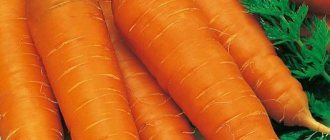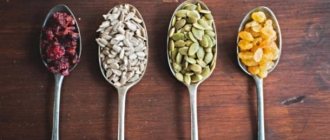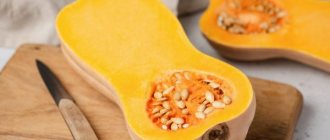Happy expectant mothers are often very concerned about the health of their diet. One of the products that almost everyone has heard about the beneficial effects of which on the body during early and late pregnancy is cottage cheese. We will tell you everything about it further.
- What are the benefits of cottage cheese for women during an “interesting” period?
- Contraindications, restrictions and harm
- How to choose the right one when purchasing
- How to store at home
- What can be done and what can be combined with
- What to replace if the woman is a vegetarian
Indications for using cottage cheese
The product is necessary to maintain health. It is useful to eat in the presence of intestinal and liver pathologies, kidney and stomach diseases. The product increases the strength of blood vessels and improves the condition of the cardiovascular system. Cottage cheese contains iron, which helps increase hemoglobin levels in the body.
Regular consumption of cottage cheese during pregnancy is indicated for the following pathologies:
- liver diseases;
- dysfunction of the gallbladder;
- pathologies of the thyroid gland;
- Presence of diabetes mellitus in a pregnant woman;
- lung diseases;
- nervous disorders.
General information
Cottage cheese is a fermented milk product obtained through the process of fermenting milk. It is believed that cottage cheese is a rich source of calcium, which is so important for pregnant women.
However, this is not quite true. There is quite a lot of calcium in cottage cheese , but not as much as is commonly believed.
With a pregnant woman’s daily requirement of 1500-2000 mg, 100 g of cottage cheese contains only about 120 mg of calcium .
But the same amount of product contains up to 35 g of milk protein - curdled casein.
It is very easily digestible, therefore, as a source of protein, cottage cheese is an invaluable product that can replace animal proteins.
The calorie content of a low-fat product (0.6% fat) is 110 kcal, and a semi-fat product (9%) is 169 kcal.
Due to its low calorie content, it is often recommended to be used when following various diets for weight loss, and the large amount of protein (more than in meat!) makes it an excellent element of sports nutrition.
In addition, cottage cheese contains phosphorus, amino acids, enzymes, methionine, tryptophan, which have a beneficial effect on the development of the baby in the womb, as well as more than a dozen vitamins of different groups, including vitamins A, C and D.
Cottage cheese contains few nitrogenous substances, which increase the load on the kidneys and liver. Also, unlike other dairy products, cottage cheese contains a small amount of lactose .
This allows people who are lactose intolerant to safely consume it.
Grain cottage cheese is very popular . This is a low-calorie product that is even easier to digest than regular cottage cheese, no less healthy and tasty.
Cottage cheese can be used not only as a food product. It is also used as a mask for the face and body. They can treat burns.
Cottage cheese - benefits and harm - program “Live Healthy!”
Methods of eating the product
Cottage cheese has a pleasant taste. But if a pregnant woman wants to sweeten it, you can add a small amount of berries or fresh fruit to the product. Raisins, nuts, dried apricots, and honey are also added to the cottage cheese. The following delicious dishes are prepared from the product:
- vareniki;
- syrniki;
- casserole;
- souffle;
- delicate desserts;
- puddings.
Cottage cheese is also used as a filling for pancakes. It is prepared at home from milk and a special starter, which can be purchased in the store.
What can be done and what can be combined with
The most famous dishes that can be prepared from cottage cheese:
- dumplings - sweet or salty;
- ravioli, dumplings, gnocchi;
- cheesecakes (during pregnancy it is better not fried, but baked in the oven);
- cheesecakes, buns, shanezhki;
- various casseroles;
- pies;
- cheesecakes;
- cakes;
- cupcakes;
- cookie;
- Sochniki;
- pancakes;
- Dessert;
- Easter;
- add to fruit or vegetable salads;
- mix with nuts, sugar or honey;
- blend with tomatoes, herbs, garlic, salt and much more.
Cottage cheese goes well with dried fruits, berries, milk, baked milk, cream, sour cream, and olives.
How to make cottage cheese at home?
You can make cottage cheese yourself from fresh kefir:
- The fermented milk drink is poured into a saucepan.
- The container is placed in a water bath. Kefir should be heated over low heat for about 20 minutes. In order for the whey to separate better, you can add a teaspoon of sugar syrup to the drink.
- After the specified time, the resulting mass is tightly closed with a lid.
- After this, you need to drain the excess liquid. To do this, spread the cottage cheese on cheesecloth or a sieve with small holes.
From the resulting whey you can make a delicious jelly. For this you need the following ingredients:
- 1 liter of whey;
- 110 g sugar;
- 100 g jam;
- 30 g gelatin.
First, the whey must be strained through gauze wrapped in several layers. It is heated over low heat. Then sugar is added to the whey, after about 20 minutes gelatin is added to it. The resulting mixture is heated, but the future jelly should not be brought to a boil. Then turn off the fire, add jam and fill small molds with the resulting mass.
Cottage cheese can be prepared in another way:
- A liter of fresh milk is poured into a small saucepan.
- Cover the container with a lid and place it in a place protected from sunlight. At room temperature, the process of souring milk takes approximately 20 hours.
- Then the container with sour milk is placed in a larger pan to make it easier to control the process of whey release.
- After this, the liquid is heated over low heat.
- After about 20 minutes, whey of a yellowish hue will appear in the pan with sour milk and small clots of a cheesy consistency will form.
- Remove the container from the stove and leave it to cool.
- Then the resulting mass is filtered through a colander. The result is cottage cheese with a delicate taste.
Small details! It is not recommended to make cottage cheese from farm milk, as it is too fatty. A pregnant woman can purchase pasteurized one percent milk. This drink will make low-fat cottage cheese. But low-fat milk takes a long time to ferment. Therefore, to speed up the process of preparing cottage cheese, it is recommended to add 20 ml of kefir to it. The product is useful for pregnant women suffering from diseases of the pancreas or liver.
What are the benefits of cottage cheese for women during an “interesting” period?
Cottage cheese is a product made from sour milk when heated milk is pressed and the whey is separated from it.
In production, 2 methods of its manufacture are used:
- Traditional (ordinary), in which an acidic product is prepared (the milk for its production is fermented independently) and acid-rennet (a special substance from the gastric juice of a cow - pepsin - and beneficial bacteria are added to the milk for fermentation).
- Separate, in which cream is first obtained from milk, and then skim milk is used to make it.
In addition, the product is distinguished:
- Fatty, which can contain up to 23% fat.
- Classic – up to 18% fat content.
- Low-fat (bold) – 1.8%.
- Fat-free – 0%.
Surely many value cottage cheese for the presence of calcium: the most of it is contained in low-fat cottage cheese - 176 mg per 100 g, and the least in fatty cottage cheese - 150 mg per 100 g. If you are concerned about the question of what else the described product is useful for pregnant women, then it is important to know: that it contains proteins, fats, carbohydrates, 13 vitamins and microelements (in fat – 19).
Did you know? Cottage cheese is easily digestible, helps remove excess fluid from the body, restores the nervous system, improves fat metabolism, increases hemoglobin, strengthens cartilage and bones, and is useful for diseases of the heart, liver, and blood vessels.
Harm to the product
Excessive consumption of the product can have a negative effect on the pancreas, so it is not recommended to push it too hard. You should eat no more than 150 grams of product per day.
It is recommended to avoid eating fatty cottage cheese during pregnancy. The product can cause rapid weight gain, which is extremely undesirable while expecting a baby. Stale cottage cheese, which is produced without observing hygienic standards, can cause food poisoning or infectious intestinal diseases.
If you have a pronounced tendency to allergic reactions, you should be careful when eating cottage cheese. The product is contraindicated in case of individual intolerance to milk protein.
Breast-feeding
What is useful for mother and baby
Cottage cheese is one of the few products that can be consumed by a nursing woman immediately after the birth of a child.
During this period, the mother's nutrition should be strictly regulated. Only those products that do not cause bloating, intestinal colic, allergic rashes, itchy skin, diarrhea, etc. in the baby are allowed for consumption. In the first three months, the baby’s digestive system continues to form, so any product eaten by a nursing woman can lead to negative reactions from the child.
When breastfeeding, cottage cheese helps in the development of the child
Fortunately, we are not talking about cottage cheese. Its positive effect on all organs and systems of a nursing woman has already been discussed above. In addition, cottage cheese, like any fermented milk product, increases breast milk production. But the benefits that cottage cheese brings to a newborn are also difficult to overestimate.
- The skeleton of the child's bones and muscles becomes strong and healthy.
- The baby is actively developing both physically and mentally.
- The baby's immunity is strengthened, his body becomes more protected from many diseases.
- Cottage cheese, passing through breast milk, makes the baby’s skin healthy and clean, and has a positive effect on hair, nails and teeth.
- The functioning of the baby’s digestive system is normalized.
- The product also has a positive effect on the state of the child’s nervous system.
However, each case is individual, and if the child has negative reactions, then the use of cottage cheese by a nursing woman should be delayed. Such cases, although rare, do occur.
Possible harm and contraindications
Sometimes cottage cheese can still harm the baby during breastfeeding. First of all, we are talking about a stale product. If the cottage cheese has expired, then there is a high probability of developing intestinal infections in it. As a result, the child and the nursing woman can suffer greatly.
The baby will also react poorly if the mother ate high-fat cottage cheese: colic, bloating, loose stools or constipation may appear.
Contraindications to using the product during lactation are the same as during pregnancy. It should be noted that if a mother has an individual intolerance to cottage cheese, then in 99% of cases this intolerance also manifests itself in the child. Therefore, in this situation, it is better to completely abandon the product for a while.
Which product is preferable?
It is already clear that it is better not to consume a fatty product during lactation, since the child’s body will react violently to it.
Therefore, both during pregnancy and during lactation, it is recommended to use cottage cheese with a fat content of 5–9%.
Also, a nursing mother can eat grain cottage cheese, since it has a reduced fat content.
If preference is given to a homemade product, then it is better to prepare it yourself from low-fat milk in compliance with the necessary sanitary standards so as not to harm the health of the child and mother.
Options for use during lactation
In order for the baby to receive all the necessary nutrients from cottage cheese, a nursing woman only needs to eat 100 g of the product per day.
You can eat cottage cheese in its pure form, or you can prepare delicious dishes from it.
Cottage cheese casserole
Many people have loved this dish since childhood, because it is both tasty and healthy. However, do not forget that to prepare it you will need eggs, which are not recommended for consumption in the first month of a child’s life. Therefore, you can try cottage cheese casserole with caution, starting from the second month. It would be even better if you replace chicken eggs with quail eggs, since they are hypoallergenic and contain much more useful components.
Ingredients:
- cottage cheese - 250 g;
- chicken eggs - 2 pcs.;
- sugar - 1 tbsp. l.;
- semolina - 2 tbsp. l.;
- baking powder - 0.5 tsp;
- vegetable oil - 1 tbsp. l.
You need to mix cottage cheese with eggs, add sugar, baking powder and semolina. Place the mixture in a mold greased with vegetable oil and let it brew for 20 minutes. Then place the mold in the oven, preheated to 180 °C. Baking time - 30 minutes.
The calorie content of the dish is 168 kcal per 100 g of product.
Pregnant women can also eat cottage cheese casserole.
Cottage cheese casserole can be consumed during pregnancy and lactation
Vegetable salad
Vegetables during lactation also have a positive effect on the body of mother and child. Of course, in the very first days of a baby’s life, vegetables are introduced into the diet of a nursing woman with great care. But from the third month of a child’s life, their range can be significantly expanded and used to prepare a vitamin salad.
Ingredients:
- grain cottage cheese - 200 g;
- tomatoes - 1 pc.;
- bell pepper - 2 pcs.;
- fresh cucumber - 2 pcs.;
- natural yogurt - 1 tbsp. l.;
- dill, parsley - 2 sprigs each;
- salt - to taste.
All vegetables should be washed, dried, and the core removed from the pepper. Cut the cucumbers, tomatoes and peppers into cubes, put them in a salad bowl, add cottage cheese and yogurt, add salt and mix. Add chopped herbs.
The calorie content of this salad is 65.1 kcal. Therefore, it can be consumed daily.
The low calorie content of the dish allows it to be consumed daily
Is it possible to have cottage cheese with sour cream?
Many women prefer not to bother with preparing cottage cheese dishes, but to eat it with sour cream and sugar. But here you should remember that if you use fatty sour cream, the baby may have an upset stomach. Therefore, this dish can only be consumed with low-fat sour cream.
The calorie content of 100 g of product is 168 kcal, so you should not eat it every day: 1-2 times a week will be enough. It is better to consume it in the first half of the day so as not to overload the liver.
Reviews
Our cottage cheese with sour cream made me blush a lot, now I don’t eat it... Although I love it very much
Svetlanka
https://eka-mama.ru/forum/part10/topic66205/
I eat it every morning and haven’t noticed any deviations.
Natalia
https://www.babyblog.ru/community/post/01medicina/1742975
I have been eating homemade raw cottage cheese since birth, there were no reactions. Everything is individual, I think.
Geta
https://www.babyblog.ru/community/post/01medicina/1742975/1#comm_start
What should you pay attention to?
When buying cottage cheese, you need to carefully study the label, which lists its composition in detail. A quality product should not contain harmful additives. A pregnant woman is not recommended to buy curd or paste. Such products can be harmful to the body. Such products often contain difficult-to-digest fats, palm oil, preservatives, dyes and thickeners.
The average shelf life of natural cottage cheese is three days. It is not recommended to buy a product with a long shelf life.
Features of choosing cottage cheese for making cheesecakes
Cottage cheese is the main ingredient in cheesecakes, so this product must be chosen carefully and scrupulously. Stale or too fatty cottage cheese can cause you to end up with flat cakes that spread out in the frying pan instead of rosy, plump cheesecakes.
So, rule one: you should not use high-fat cottage cheese for making cheesecakes. A product with a fat content of 5–7% would be optimal. Even 9% cottage cheese will not hold its given shape well and you will have to add an increased amount of flour to the dough for cheesecakes.
Low-fat cottage cheese makes it possible to give cheesecakes a stable shape with high sides, which is preserved during frying
Rule two: for cheesecakes you can use absolutely any type of cottage cheese - from cow, sheep or goat milk, but it must certainly be fresh and of high quality. It should not contain additives such as starch and vegetable fats. For this reason, it is better to use cottage cheese to prepare cheesecakes, and not curd mass, to which manufacturers liberally add extraneous additives.
You can check cottage cheese for the presence of starch in its composition using a simple test. You should drop regular iodine onto a lump of cottage cheese, and then look at the result of the experiment. If there is at least a small amount of starch in the cottage cheese, the iodine will turn blue. Iodine will retain its yellow-brown color when interacting with natural cottage cheese without additives.
Don’t be lazy to test the naturalness of cottage cheese from your favorite manufacturer.
And rule three: the less flour you add to the main ingredient, the more beneficial properties the prepared dish will contain. Some types of cottage cheese make excellent fluffy cheesecakes without flour. For example, from granular cottage cheese, cheesecakes will turn out fluffy and will have a porous structure.
Granular cottage cheese is also called grainy cottage cheese; this is the most suitable type of dairy product for making cheesecakes.
Low-fat coarse cottage cheese may seem a bit dry, but it is precisely this feature that allows you to make cheesecakes fluffy
Flour in cheesecakes
A couple of spoons of flour in cheesecakes will not cause irreparable harm to the dish. However, if for some reason you do not want to add wheat flour, then it can be replaced with another product.
For example, you can use the following as a dough thickener for cheesecakes:
- semolina;
Semolina in cheesecakes gives them a slightly sweet taste - corn starch;
A tablespoon or two of cornstarch will help thicken the cheesecake batter. - oatmeal or Hercules flakes ground in a coffee grinder;
Oatmeal is rich in vitamins and fiber; adding it to cheesecake dough will increase the nutritional value of the finished dish. - crushed flax seeds;
Flaxseed contains a record amount of organic fatty acids - powdered milk;
Natural milk powder allows you to make the dough for cheesecakes thicker and gives the finished dish a creamy taste and pleasant aroma - crushed amaranth seeds;
Amaranth seeds contain a lot of squalene, which increases the absorption of calcium and phosphorus from cottage cheese - sesame flour.
Sesame flour gives cheesecakes a nutty flavor and unusual aroma
All these additives increase the nutritional value of prepared cheesecakes and are an excellent replacement for regular wheat flour.
Title dilemma
Why do we unknowingly call cheesecakes that way, and not cottage cheese or something else? This is an original Slavic dish originally from Ukraine. Previously, in Ukraine and Rus', cottage cheese was simply called “white cheese.” Thrifty housewives did not want to throw away sour milk and made cheese from it. The recipe was incredibly simple, and the family happily ate this delicacy.
Fasting day on cottage cheese
During pregnancy, fasting days can be organized only with the permission of a doctor. This need may be associated with the correction of weight gain or with the need to remove accumulated harmful substances and toxins from the body. During a period of short-term dietary restriction, the woman’s immune system and metabolism are activated, which has a positive effect on her condition.
For a “curd” fasting day, they usually take 500 grams of low-fat products. This mass is divided into 3-4 servings and consumed throughout the day. All this can be washed down with water or low-fat kefir. The frequency of such fasting days is determined by the doctor.
Did you know? Once upon a time in India, during festivals in honor of the god Krishna, a pot of cottage cheese was always broken. It was believed that such a ritual would bring good luck to all participants for the whole year.
Drying cheesecakes: is it possible or not?
Firstly, cheesecakes will only increase appetite, and not reduce it, as it might seem, especially if the athlete has been following a low-carbohydrate diet for a long time.
When making cheesecakes according to standard recipes, you will have to say goodbye to so much flour and sugar. However, Dukan recipes or changing standard ingredients to those that promote weight loss are considered acceptable for “drying.” Why should you give up some foods? Sugar and flour often cause a significant “release” of insulin and a noticeable change in glucose levels. For an athlete who is preparing for a competition, or for a person awaiting an important event, this is undoubtedly an argument to refrain from consuming such a product for a certain period of time. Also, some people have problems digesting cottage cheese. In such cases, it is recommended to try to cook only baked cheesecakes or completely abandon this product. Benefits of cottage cheese pancakes:
- Casein helps to quickly satisfy your appetite due to its sufficient nutritional value. This is a unique protein that is part of cottage cheese and completely replaces the proteins contained in meat products;
- mineral compounds involved in the formation of bone and muscle tissue are also one of the main beneficial properties of cottage cheese contained in cheesecakes;
- amino acids contained in cottage cheese protect liver tissue and promote its healthy functioning;
- Some vitamins prevent the occurrence of atherosclerosis.
Methods for preparing cheesecakes
Housewives usually prefer to cook cheesecakes in a hot frying pan with butter. A dish prepared in this way has a crispy, golden brown crust that stimulates the appetite. Children especially love cheesecakes fried on both sides.
To create a golden brown crust, cheesecakes are rolled in flour, breadcrumbs or semolina.
Cheese pancakes fried in melted butter are very tasty. They have a darker crust and a creamier, richer flavor.
Those who avoid eating fried foods will appreciate oven-baked cheesecakes. Long-term uniform heating allows the cheesecakes to become very fluffy, and the lack of a crispy crust is successfully compensated by the denser texture of the dish.
You can bake cheesecakes in the oven without using any oil at all; to do this, just line a baking sheet with baking parchment
For cheesecakes that will be cooked in the oven, it is better to choose cottage cheese with a fat content of 9–14%. The oven dries out the cheesecakes a little, so cottage cheese with a slightly higher fat content will protect the dish from drying out.
One way to get a low-fat dietary dish is to cook cheesecakes in a slow cooker. To do this, cheesecakes according to the usual recipe are prepared for ten minutes on each side on the “Baking” mode. This dish does not require adding oil.
Cheesecakes in a slow cooker turn out very fluffy, keep this in mind when placing them in the bowl
Cheesecakes in a slow cooker should be cooked with the bowl closed, this guarantees the airiness of the finished dish.
The fastest way is to cook cheesecakes in the microwave. In this case, adding oil is also not required and you can do without frying. The result is a completely dietary dish that is perfect for feeding children or those on a diet.
Cheesecakes cooked in the microwave lack an attractive golden brown crust, but are very tasty and healthy
Features of preparing cheesecakes for children
The main component of cheesecakes is cottage cheese, which is necessary for the full growth and development of a child. But for children's diets, the method of processing the product is extremely important, so most pediatricians do not recommend frying in oil. Baking cheesecakes in the oven or microwave allows you to prepare a healthy dish with a distinct taste and aroma without the use of oil or other fats.
It is also recommended to reduce the amount of sugar in baby food. You don’t need to add sugar at all to cheese pancakes made from fresh low-fat cottage cheese; it can be successfully replaced by sweet dried apricots, prunes, dates, raisins or dried cranberries. All these additives will please the child and will make the dish not only tasty, but also very healthy.
Do not overdo it with adding dried fruits to cheesecakes for baby food, as all these additives are several times sweeter than sugar.
Cheesecakes in the oven without flour
- Cooking time: 45 minutes.
- Number of servings: 4 persons.
- Calorie content of the dish: 202 kcal.
- Purpose: for tea / for afternoon tea / for breakfast.
- Cuisine: Russian.
- Difficulty of preparation: medium.
Another current recipe for a dietary treat is cheesecakes in the oven without flour. By cooking them periodically, you can get a new appetizing dish every time. To do this, simply change the proportions of salt, cinnamon and cocoa powder. You can also add a little soda for airiness, which must first be extinguished with vinegar. The dough for this recipe leaks a little, so it is better to use molds for baking. In this case, the serve also wins if it is, for example, roses.
Ingredients:
- egg – 1 pc.;
- sweetener - to taste;
- vanillin – 1 pinch;
- semolina – 3.5 tbsp;
- cinnamon - to taste;
- baking powder – 1 tsp. without top;
- cottage cheese – 300 g;
- cocoa – 1 dessert spoon.
Cooking method:
- Turn on the oven immediately so that it has time to warm up to 180 degrees.
- Rub the lumpy cottage cheese through a sieve or chop with a fork.
- Next, add all the other ingredients to it, leaving only cocoa and cinnamon.
- Divide the resulting dough into two equal parts. Add cinnamon and cocoa to one and mix.
- Take muffin tins. If they are metal or ceramic. Then lubricate with oil.
- Fill each mold with one of the types of dough and bake the delicacy for about half an hour.
How to choose the right one when purchasing
When buying the right product, you need to know that it should be white, moderately dense, homogeneous, have a pleasant, slightly sour taste and smell, not be sticky, and the packaging should not swell.
The description of the composition should not contain preservatives, dyes, or vegetable fats. There is no need to buy a product with a liquid consistency, which is in whey, consists of layers or lumps, and has a long shelf life (more than a week).
You can buy it in a store, at a bazaar, go to the village for it, or make it yourself. Some people are disdainful of products from the market, believing that in industrial production and the store there is more control over the products.
This is not always the case: unscrupulous sellers can sell expired products, change the date on them, store them inappropriately, and unscrupulous manufacturers replace milk fat with palm fat, which is harmful to humans, and add soy.
But in the store you are more likely to find low-fat and low-fat cottage cheese, which are useful during pregnancy. At the bazaar, sanitary and epidemiological control is carried out over sellers; they must submit their products for analysis.
Important! In the store, you can confuse natural cottage cheese with curd mass or a curd product, so you need to read the label carefully.
But there is a big chance to buy stale goods, so you should pay attention to the fact that it is not weathered, there is not too much of it on the counter, and the dishes are clean.
Many people believe that you can only buy a truly good product in the village, but in reality it depends on the owner.
It is best to first inquire about it from your neighbors, look at its appearance (is it neat, healthy), find out who the locals buy the product from, and see what condition the cow and the barn are in.
You can try the product at the bazaar and in the village; cottage cheese bought in a store can be tested at home. If an unpleasant fatty taste remains on the tongue and does not dissolve, this means that the product contains palm fat.
If you leave a piece of natural cottage cheese on the table overnight, it will sour a little and will not develop a yellow crust.
To make the product weigh more, starch can be added to it. You can check its presence by dropping iodine onto a piece of cottage cheese - blue color means the presence of starch.
Making cottage cheese yourself is very simple. To do this, the milk is left on the table for 6-8 hours so that it begins to sour, remains liquid, but does not turn into curdled milk.
After this, put the milk in the oven for 1 hour and turn it on at 180°C or use a water bath (after the water boils, remove it from the heat).
Milk should not boil, its temperature should not exceed 70°C, otherwise, instead of a tasty and healthy product, you can get a substance with an unclear taste and poor digestibility.
Then the mass is thrown onto a sieve lined with gauze and allowed to drain well, also covering the top with gauze. It is not advisable to use a weight - it can dry out the product.
To prepare cottage cheese, you can also use a special starter purchased at a pharmacy or store, but this will not affect the speed of its preparation. But you can speed up the process if you add pepsin purchased at the pharmacy - the milk turns sour in literally half an hour.
Important! Cottage cheese cannot be made from kefir - its normal composition contains yeast, acetic acid and alcohol, but this should not be in a real product.
Cheesecakes with starch
If you are on a low-carb diet, we highly recommend trying Dukan cheesecakes. Prepare the following ingredients:
- dry cottage cheese - 300 grams;
- 1 protein;
- 2 tablespoons cornstarch;
- liquid sweetener - 2-3 drops.
Mix all the ingredients in a bowl and with wet hands form small cheesecakes. The smaller they are, the easier it will be to turn them over. Heat a non-stick frying pan, add cheesecakes, reduce to low and fry covered for 8-10 minutes on each side.
How to give cheesecakes airiness
One way to give cheesecakes a fluffiness and an airier texture is to add baking powder or soda to the dough. Professional chefs still recommend using baking powder, or, as they call it, cooking powder.
The fact is that soda often gives the finished dish a slightly bitterish specific taste and a gray color.
Baking powder contains baking soda and cream of tartar, this combination gives any baked goods and dishes to which flour is added an airy structure.
Another culinary technique to get fluffy, delicious cheesecakes is rubbing the cottage cheese through a sieve. This is not so difficult to do; fresh, tender cottage cheese is easily rubbed through the sieve, and as a result, the finished dish has a more delicate texture.
It is very convenient to rub the cottage cheese through a sieve with a large spoon or pestle to prepare mashed potatoes.
A few hours before preparing the cheesecakes, it is better to remove the cottage cheese and eggs from the refrigerator and place them on the work table. Let them reach room temperature, this will make it much easier to beat the eggs with sugar until a stable foam is obtained, and make the pureed cottage cheese uniform and smooth.
Get all the necessary ingredients for cheesecakes 1.5–2 hours before cooking
When, how much and what kind of cottage cheese is best to use
Throughout pregnancy, it is recommended to consume no more than 100–150 grams of cottage cheese per day. Low-fat cottage cheese is more suitable for daily consumption. Low-fat (up to 7% fat content) can be eaten only periodically, and in the later stages of pregnancy it should be completely excluded from the diet, replacing it with low-fat.
Did you know? You can easily determine whether cottage cheese contains starch, which unscrupulous manufacturers often add to it to increase weight: just drop a couple of drops of iodine on a piece of cottage cheese. If the iodine color changes to dark blue, then the product contains starch. In the absence of this component, the iodine drops will remain yellow.
One of the options for correct use is 100–150 grams during lunch or dinner, washed down with low-fat kefir. It is advisable to consult a doctor regarding the correct composition of the diet and the place of cottage cheese in it.











